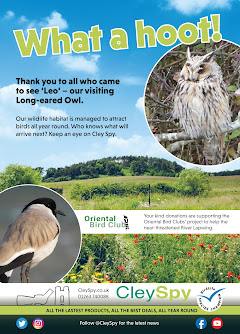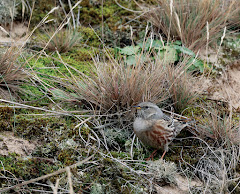Peter Clarke — Friday 17 June 2011
RECENTLY a friend asked me about a curious leaf-like structure that he found on a leaf in his garden. It had a longish stalk stuck on a leaf with an egg-like blob at the end of it. I knew this creature and later recalled that it was made by a lacewing fly.
There are about 45 species of lacewing flies in the UK, but many found only commonly in southern England where the green lacewing fly is often attracted to house lights and is the only lacewing to spend the winter in hibernation.
The female first puts a drop of mucus on a leaf and than pulls it into a thread (the stalk) and when it has hardened she places an egg on it. Up to 500 eggs can be laid singly or in groups. The small larvae are voracious predators on aphids etc... so it is good to have this fly in your garden.
The adult fly is 18mm to 20mm long with folded wings. Its antennae are very long. The larvae are extremely clever in that they camouflage themselves with their own cast-off skin and the skins of their victims! It is not so common as it used to be, due it is thought, because of the widespread use of pesticides and herbicides.
These chemicals cannot distinguish between friend or foe, but then, neither can birds feeding themselves and their youngsters. A family party of coal tits in our garden are currently being fed with aphids, but equally lacewing or any other larva would suffice. It is all a question of balance in the complicated wildlife food chain.
With the widespread use of chemicals the chain is broken with disastrous consequences. I note that the EU is banning and restricting some more chemicals later this year.
The extraordinary weather this spring has made life difficult for wildlife. The long drought has left hardened ground and gales have uprooted trees and bushes. North and east winds have kept temperatures below average. All this after the worst winter for 50 years, which killed off many shrubs and plants.
Lawns and greens are still no longer green, they are brown, but perhaps will recover when the rains come.
Blackbirds have been desperately searching for worms which are no longer near the surface. A hen house sparrow repeatedly visited a wild parsley plant to eat the unripe seeds. I fear for those birds such as rooks and herons which build their nests in high trees.
Wild rabbits have invaded our garden, but there is little food for them there. I watched as a young rabbit was busy nibbling the lower leaves of a yew tree. I know that birds are able to eat the poisonous yew berries with impunity, but wondered at the effect on an animal. We soon found out when the rabbit lay dead nearby. On a more pleasant day I watched an adult wild rabbit sunbathing.
However, all is not doom and gloom. Locally there are good numbers of young tits, starling, moorhens, blackbirds and mallard.
Elsewhere along the coastal marshes we hear that avocets, marsh harriers and bitterns are doing well. Back in April we did record three red admirals in our garden, obviously immigrants as they could not have survived our winter.
About that time a humming bird hawk moth was visiting honesty flowers in our garden, another obvious early immigrant.
We have seen good numbers of orange tip butterflies, also holly blue, speckled wood, brimstone, comma, small tortoiseshell and peacock.
Nocturnal moths, too, have been in good numbers, unusually so in March. The Hebrew character moth was flying then and continues in late May to fly to our MV light in good numbers although reference books only record that it flies until early May.








































No comments:
Post a Comment